I walked the county boundary of Gloucestershire: Claire Jenkins
I used to live in London, but went home to Gloucestershire at the start of the pandemic. I’m an active person, easily bored, and I thought: “What am I going to do?” I decided to get to know my county by walking its boundary.
I have a geography degree but I don’t know how to plan a route, so I turned to the YesTribe, a community that comes up with ideas and solutions. Someone plotted the 300-mile route for me, and I thought: “Oh no – I’ve got to do it now!”
I hiked from my family home on the edge of the Forest of Dean and, when restrictions allowed, from friends’ houses. I spent a couple of nights camping, but mainly I did day hikes – 15 days of walking in total, over about six months. I walked 25-30 miles a day in summer, less in the colder months.
I walked through sunshine, snow, wind and floods. One day I found myself wading through thigh-high muddy water; other times I didn’t know where I was and my phone had run out of battery. But getting over these mini-barriers was uplifting, inspiring and empowering.
I saw parts of Gloucestershire I’d never seen before – I absolutely loved walking by the Severn, and exploring the north-east of the county. I walked alone, but I had conversations with other walkers, cyclists and paddleboarders.
I’d thought about doing a solo walking challenge for a while, but actually doing it opens up so many possibilities. You think: “What else could I do?” Having lived in a city for so long, this brought back my love of the outdoors. I’ve swapped my stilettos for hiking boots and my laptop bag for a rucksack!
Now when I catch up with friends, we go for a walk instead of a coffee. I’ve since completed other walking challenges, such as visiting all the trig points in Gloucestershire. I did a lot of that with my dad and my aunt – I wanted an activity we could share. It was fun to see my 70-year-old aunt climbing over fences and barbed wire! We’d have tea and cake and look at the stunning views.
The pandemic has made me reframe my mindset. I’ve travelled a lot in Europe, Africa and Asia, but now I’ve found such interest close to home. You don’t have to go overseas to have amazing adventures – there is cool stuff on our doorsteps.
Claire Jenkins is the co-founder of tablecrowdtalent.com
I circumnavigated England on my free bus pass: Penny Ibbott
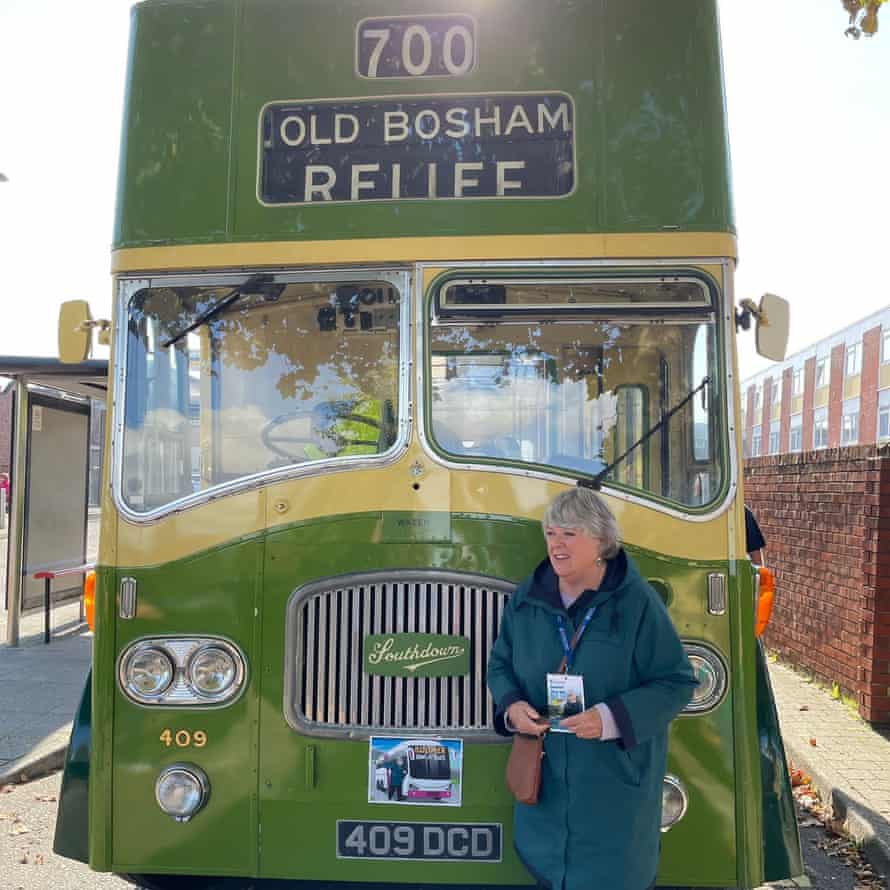
It was New Year’s Eve 2019. I was slightly sozzled when my daughter asked if anyone had anything exciting planned for 2020. I said: “I wonder how far I can get on my free bus pass?”
Just over two months later, I set off from my home in Chidham, West Sussex. I had planned to travel around the whole of England by bus, but was I got about 10 days in, when the first lockdown was announced. I was gutted.
In September 2021, I started again. It took me almost six weeks to travel the entire 2,200 miles on about 120 buses, staying as close to the coast as possible. My son Robin was my mission control – he sent me my journey leg by leg. But the timetables didn’t always tally: I missed a lot of buses, and had to take detours if I couldn’t find anywhere to stay. The biggest challenge was getting the right bus at the right time – and finding public toilets!
My favourite journey was from Minehead, Somerset, to Lynmouth, Devon, on an open-top bus. You go up and up Porlock Hill, coming out on Exmoor. It was a beautiful afternoon: the sea was sparkling on my right and sheep and ponies were grazing on my left. Other highlights were riding the Coasthopper along the Norfolk coast, exploring the north-east coast right up to Berwick-upon-Tweed, and travelling along the Scottish border.
The best moment came right at the end. A Stagecoach manager boarded the bus I was on and asked me to get off. He had arranged a vintage open-top bus to take me the last few miles, and all my family and friends were on it.
I have been widowed for five years. There were times on my journey when I did heartily wish for a companion, but I talked to lots of people on the buses. I haven’t always been an adventurous person, but I’ve become more so after my husband, Geoff, died. An enterprising spirit has grown in me. I have to battle a guilty conscience, because although I grieve him and miss him, I can now do things I couldn’t do before, such as visit my sister in Canada.
Age is no barrier if you’re feeling well. If you’re capable of taking a journey, do it! It keeps the sparkle in your life. It’s about the people you meet as much as the places you go, and I met some extraordinary characters.
I didn’t set out to be a hero or be inspiring; I did it for the adventure. This trip has given me a new zest for life. I hope to crisscross England next, visiting every county – by bus, of course.
Penny Ibbott is fundraising for St Wilfrid’s hospice in Chichester, justgiving.com
I went wild camping with a baby: Bex Band
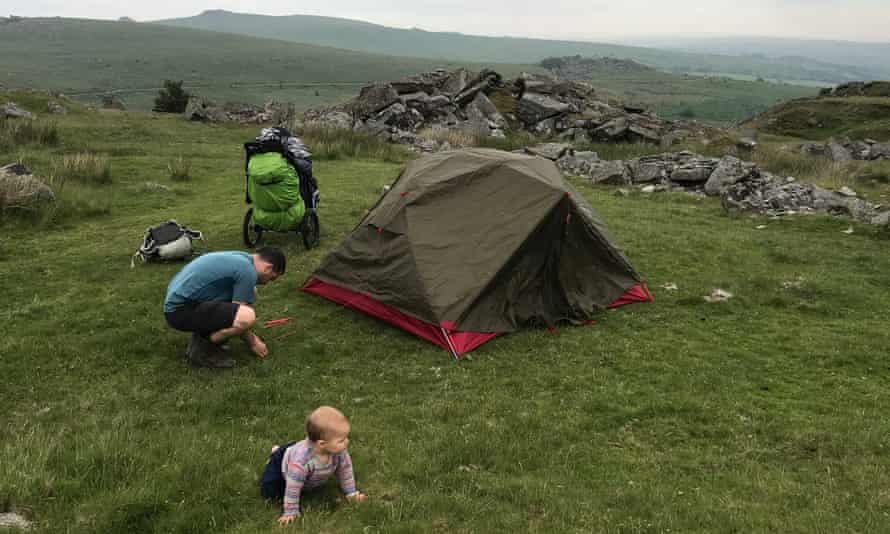
My passion for adventure started quite late – my family weren’t really into the outdoors. But in 2017 I quit my job, packed up my London flat and went to walk the 1,000km Israel National Trail, inspired by a list of long-distance hiking trails published in National Geographic. It changed my life! When I came home I didn’t go back to teaching but set up Love Her Wild, an online community for women wanting outdoor adventure. It started as a Facebook page but now we have 30,000 members. I went on so many adventures – and led my own trips.
When I had a baby in 2021 I knew, of course, that things would change. I would be less free, but I didn’t want the adventures to end. So in June 2021, when Rivi was 11 months, my husband, Gil, and I decided to go on a four-day wild camping trip on Dartmoor (the only place in England and Wales where wild camping is allowed, as long as campers leave no trace).
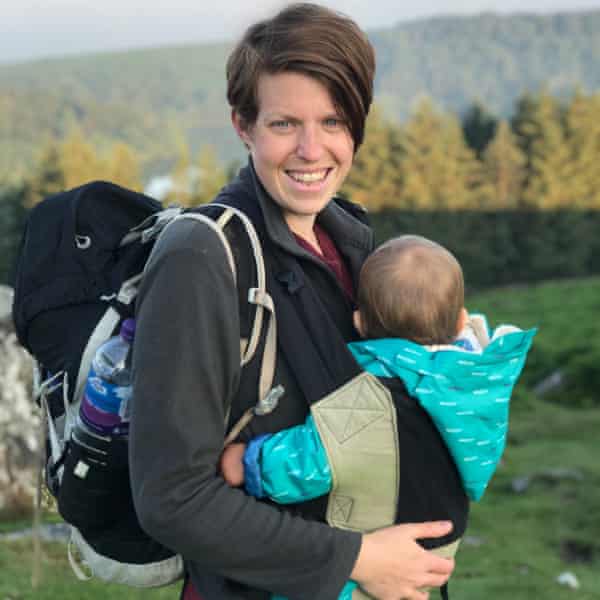
We picked somewhere quite close to where we lived in case things went badly wrong, but the biggest issue was how to transport the baby and everything she needed – nappies, food, equipment – as well as tent, cooking gear and lots and lots of water. We bought a three-wheel buggy designed to go off-road and chose a circular route from Princetown designed for mountain bikes. “If a bike can do it so can a buggy” was our thinking.
As we set off I was so excited I got goosebumps. It was everything I look for in an adventure: out in nature, doing something new, a challenge. We piled everything we could on to the buggy, perched the baby on top, and carried the rest in rucksacks. The going may have been slower than planned – it was difficult and bumpy in parts and we stopped more than we normally would for snacks, suncream application and breaks, but it was amazing! Rivi loved the tent and slept so well on a roll mat. She saw wild horses and enjoyed all the time outside. We got up early and had naps together in the afternoon. With no distractions from phones and work, we were it forced to really slow down and enjoy being just us in the great outdoors. It’s tempting as parents not to try new things – you’re so tired all the time – and it did take some planning, but it showed me adventures with babies are 100% doable and so rewarding. You just need to be adaptable and not have too many expectations!
Bex Band is the author of Three Stripes South, Bradt Guides, £9.99 (£9.29 at Guardian Bookshop)
I kayaked a tidal race: Kevin Rushby
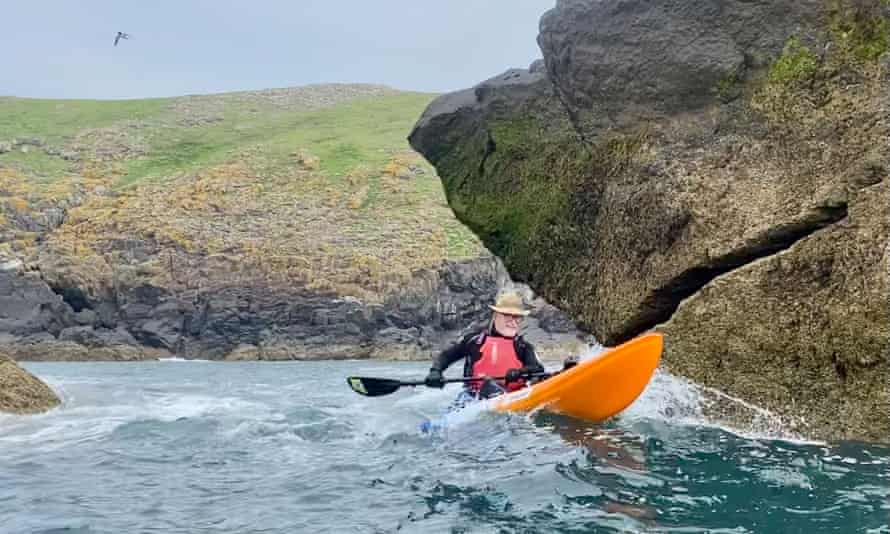
Jack Sound is a narrow strait between Pembrokeshire’s Marloes peninsula and the bird sanctuary island of Skomer. It’s home to one of the fastest tidal races in the world when, twice a day, a vast amount of seawater is forced at speeds of up to six knots through an 880-metre gap, causing large standing waves, whirlpools and lots of white water.
After too much time hemmed in by lockdown I was after a new adventure. I had long-distance walks planned but wanted a different challenge. I remembered watching the power of the tidal race from the cliffs above Jack Sound and began to wonder if it might be possible to kayak. Instructor Jet Moore from Adventure Beyond is a former Team GB whitewater slalom champion and knows the area well: he agreed to take me.
We set out from Saint Martin’s Haven, a short paddle from Jack Sound. Jet is utterly professional about safety so I wasn’t worried. We crossed the mouth of the sound during a lull then paddled along the north cliffs of Skomer Island. It was magical – loads of puffins, guillemots and razorbills, plus a friendly seal.
Using tidal currents we reached the south side and watched juvenile puffins zooming overhead, close enough to hear the wind in their wings. Then, after five hours of glorious paddling, it was time for the final test, actually a double examination because the sound is divided by a small island, Middleholm.
Basically the tidal race is so fast that you paddle hard in one direction while actually being swept back. The first crossing went smoothly. I got a few slaps in the face with spray then picked up a swift current that swooshed me around the back of Middleholm, where we could rest.
The next bit was not so pleasant. The largest standing waves looked immense as we smashed through them. It was a complete maelstrom, but Jet had the air of a man out for a quiet stroll. At one point I spotted what looked like a flat calm section and went for it. That was a mistake. I was spun right around and hit by several waves – plus a massive shot of adrenaline. Then the current spat me out and there was an amazing few seconds of speeding along without any effort before we hauled ourselves around the headland and it was over. My first reaction was “Let’s do it again!” But of course, you can’t: the currents are shifting all the time and Jet had timed it to perfection. My challenge was complete.
I rode my horses hundreds of miles over the Scottish Highlands: Claire Alldritt
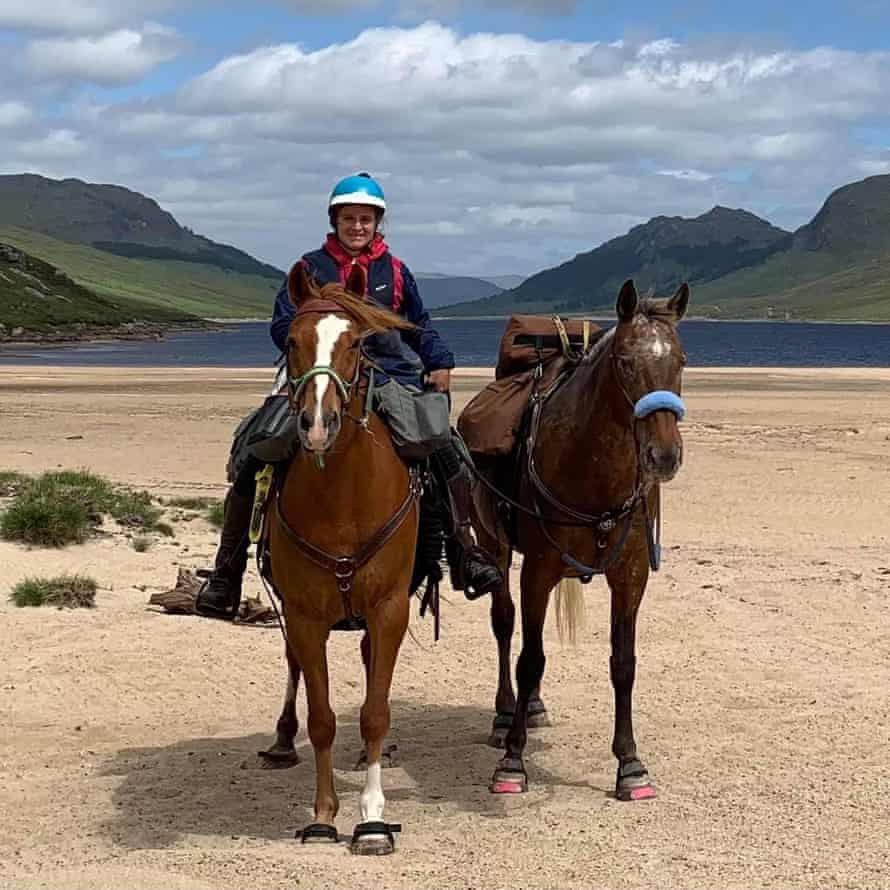
I’ve always loved hillwalking in the Scottish Highlands. I was into horses as a child, but I didn’t have my own until I was 35. When I did, I decided to combine the hills with the horses.
On my first trip, I rode with a friend and we stayed overnight in a bothy. Over 10 years, I have tackeld ever longer and more challenging trails. I have also become more self-sufficient – instead of taking a friend, I now take my other horse as a packhorse, and wild camp.
During lockdown, I spent a lot of time planning routes. This year, I was ready to tackle my toughest rides yet. In June, I rode from Fort William to my home in Keith. It was a trip of two halves: the first half was along the East Highland Way, very mountainous and remote. The second was along the Moray coast, by a brilliant blue sea, with sandy beaches and amazing-smelling pine forests. It was one of my most memorable trips – the weather was fantastic and the horses were really up for it.
In August, I did a 300km route through the Cairngorms. These were the most challenging trails I’ve ever done. I rode through deep, rocky rivers, over stony obstacles and through bogs that were up to the horses’ bellies.
It’s quite an unusual thing to do with horses, so there are no guidelines. The trails aren’t colour-coded like they are in skiing and mountain biking. In more remote areas, you don’t know whether the path is suitable for horses until you get there. Some trails don’t exist on maps, but you hear that there are ancient ways through little glens.
I was on the move for between six and eight hours a day, but that includes a lot of walking as well as riding. I alternate the lead horse and the packhorse every couple of days. There is a lot to carry: food, water, coffee flask (and hip flask for a drop of whisky at the end of the night), rugs for the horses, waterproofs for me, GPS device, air vest that inflates if I fall, first aid kit, stove, tent, tarp, corral system to secure the horses at night …
When you travel alone, you connect more with the land and live in the moment. But if you see a fabulous view or something funny happens – like when I fell in a river – there’s no one to share it with. That’s why I occasionally still head to bothies to share tales of the trails with walkers and bikers.
If you fancy an adventure, take small steps out of your comfort zone – big steps tend to be unsuccessful and put you off. Smaller steps will improve your self-confidence, which you can transfer to other areas of your life. I also feel calmer after getting out into the hills. My husbands notices if I haven’t been away for a while because I’m much more grumpy!





